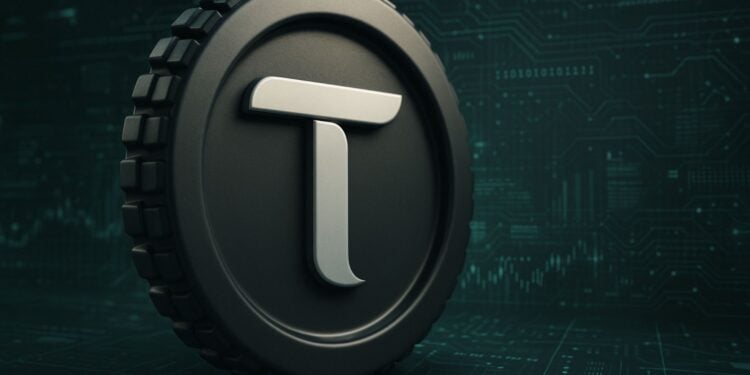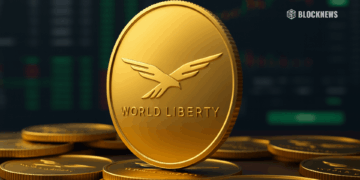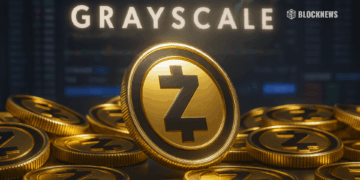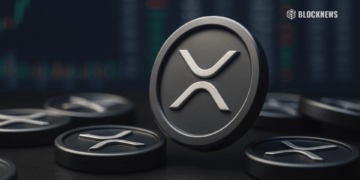- Decentralized AI Marketplace: Bittensor transforms machine learning models into tradable commodities, creating a global, peer-to-peer network where models collaborate, improve, and get rewarded in TAO.
- Solving Centralization Problems: By breaking the compute monopoly, unifying fragmented infrastructure markets, and enabling open participation, Bittensor challenges corporate silos and builds a merit-driven AI economy.
- TAO at the Core: The native token powers staking, governance, payments, and rewards across 120+ subnets, with explosive growth in adoption, partnerships, and AI-driven applications making it one of 2025’s standout AI crypto plays.
Bittensor, the blockchain protocol that is quietly reshaping the future of artificial intelligence, has emerged as one of the most radical experiments in decentralization. Essentially, it is a protocol where artificial intelligence becomes a marketplace, infrastructure becomes a commodity, and intelligence itself becomes the unit of trade. So, let us take a closer look at what this beast is — and why it is starting to turn heads across industries, institutions, and underground builders alike.
What Is Bittensor?
At its core, Bittensor is a decentralized blockchain network designed to transform machine learning models into tradable digital commodities. It creates a peer-to-peer marketplace where AI models are trained, evaluated, and rewarded based on their utility. The protocol is powered by TAO, its native token, which serves as the economic backbone of the ecosystem.
Unlike traditional AI development, which is centralized within corporate silos, Bittensor operates as a global neural network. Models interact, learn from each other, and improve collaboratively. The result is a dynamic, self-evolving intelligence layer that is not owned by any single entity. It is open to developers, researchers, entrepreneurs, and anyone with the skills to contribute.
This is infrastructure without permissions. Intelligence without gatekeepers. A system where the only thing that matters is contribution.
How Does It Work?
Bittensor is built around three primary components: Subnets, Validators, and Yuma Consensus.
Subnets
Subnets are autonomous networks operating within the broader Bittensor ecosystem. Each subnet focuses on a distinct domain — language modeling, image classification, storage provisioning, on-chain oracles, whatever you can incentivize. These are not static applications. They are live marketplaces where demand and supply meet under the TAO economy.
Validators
Validators within each subnet are responsible for scoring the outputs of other contributors (called miners). They decide which outputs are useful, rank them accordingly, and reward the most valuable contributors with TAO. The better your model, the more useful your output, the more you earn.
Yuma Consensus
Then comes the Yuma Consensus, Bittensor’s protocol-layer glue. Yuma is the reason subnets do not need to write their logic into the blockchain itself. Instead, they can define their own validation criteria, reward logic, and incentive mechanisms off-chain. This means validation logic can be probabilistic, not binary — perfect for AI and data applications.
What Problems Does It Solve?
Bittensor is a direct response to the centralization of AI. To counter this, Bittensor dismantles centralized control, unlocks fragmented markets, and unleashes a new era of open, merit-driven AI development — all while providing the economic tools to make decentralized intelligence a reality. This includes:
Breaking the Compute Monopoly
Training and running AI models today demands massive, expensive compute clusters locked behind corporate firewalls. Bittensor demolishes this gatekeeper model by turning compute into a fungible commodity traded openly on its network. Anyone with idle compute power can plug in, contribute, and be rewarded. This flips the power dynamic from top-down monopolies to grassroots, global collaboration.
Fragmented Infrastructure Markets
Storage, compute, data, and intelligence currently exist in siloed ecosystems, each with separate tokens, rules, and participants. This fractured reality makes building complex AI-powered applications a logistical nightmare. Bittensor’s unifying protocol integrates all these elements under one currency and one marketplace, enabling seamless composability and radical efficiency.
Stifled Innovation from Permissioned Systems
Most AI and cloud infrastructure today is developed in closed environments, tightly controlled by a few players whose incentives rarely align with users or developers. Bittensor’s open, permissionless architecture invites thousands of innovators to experiment with new incentive models, architectures, and applications — all rewarded transparently and fairly through TAO.
Capital Access and Economic Participation
Startups and individual developers face daunting capital barriers to compete with AI giants. Bittensor democratizes participation by allowing contributors to earn directly from their work without needing venture capital or centralized platforms. The protocol creates a meritocratic economy where quality output is the only currency that matters.
Validation of Ambiguous Intelligence
AI outputs are probabilistic and context-dependent. Traditional blockchain consensus mechanisms are not designed to handle this ambiguity. Bittensor’s Yuma Consensus protocol embraces these complexities, enabling validation that reflects the nuanced realities of intelligence.
Utility and Offerings
TAO is the lifeblood of the Bittensor ecosystem. It is a multi-functional instrument that powers every aspect of the network. This includes:
- Staking – Validators must stake TAO to participate in consensus. This secures the network and aligns incentives, ensuring that only high-quality validators are rewarded.
- Governance – TAO holders can vote on proposals, upgrades, and incentive structures. This creates a decentralized decision-making process where the community shapes the protocol’s evolution.
- Payments – TAO is used to access AI services, pay for compute and storage, and interact with subnets. It is the currency of the intelligence economy.
- Rewards – Miners, validators, and subnet owners earn TAO based on the value they provide. This incentivizes continuous improvement and competition.
- Subnet Tokens – TAO can be converted into subnet-specific tokens. Each subnet operates its own economy, with independent emissions and halving schedules. This modular design allows for specialization and scalability.
Ecosystem Highlights
Bittensor’s growth has been nothing short of explosive. Since launching its proprietary blockchain in 2023, the protocol has expanded to over 120 subnets, each serving a unique function. The daily volume of AI inferences has surpassed 50 million, and the subnet market cap is approaching $1 billion.
Institutional interest is rising. Projects like xTAO have raised millions and listed on public exchanges. Partnerships with Nasdaq-listed firms have brought strategic advisory into the fold. Moreover, AI labs, startups, and research institutions are actively building on the network.
To take this further, the community is vibrant and global. Developers are launching new subnets weekly. Entrepreneurs are creating decentralized applications powered by TAO. Investors are staking, trading, and participating in governance. All in all, the ecosystem is no longer experimental—it is operational.
Roadmap and Plans Ahead
Bittensor’s roadmap is ambitious and forward-looking, focused on transforming the network into a fully scalable, interoperable, and user-friendly ecosystem. Some key priorities include:
Enhancing Network Scalability and Validation
Expanding the network’s capacity to support more subnets and handle growing transaction volumes remains critical. Improvements to the Yuma Consensus protocol will refine validation of complex AI outputs, enabling the platform to scale across diverse digital commodities.
Cross-Chain Interoperability
Integrating Bittensor with other blockchain ecosystems is a major goal. Seamless movement of TAO and subnet tokens across chains will unlock liquidity, encourage partnerships, and open new economic possibilities.
User Experience and Developer Tools
Efforts are underway to simplify onboarding and engagement by improving developer resources, documentation, and building intuitive interfaces. This will empower both technical experts and newcomers to participate as miners, validators, and consumers.
Strategic Partnerships and Ecosystem Growth
Bittensor plans to deepen collaboration with AI research labs, infrastructure providers, and data companies, supported by grant programs to drive innovation. These moves will accelerate ecosystem expansion and establish Bittensor as a leading decentralized AI platform.
Final Thoughts
In conclusion, Bittensor challenges the centralized AI status quo by creating an open, decentralized network where intelligence is a tradable commodity. Its innovative design empowers contributors worldwide to collaborate and earn fairly, breaking down barriers in compute, data, and infrastructure. So, as this ecosystem continues to evolve and gain momentum, it will be interesting to see how Bittensor shapes the future landscape of artificial intelligence and digital economies.














